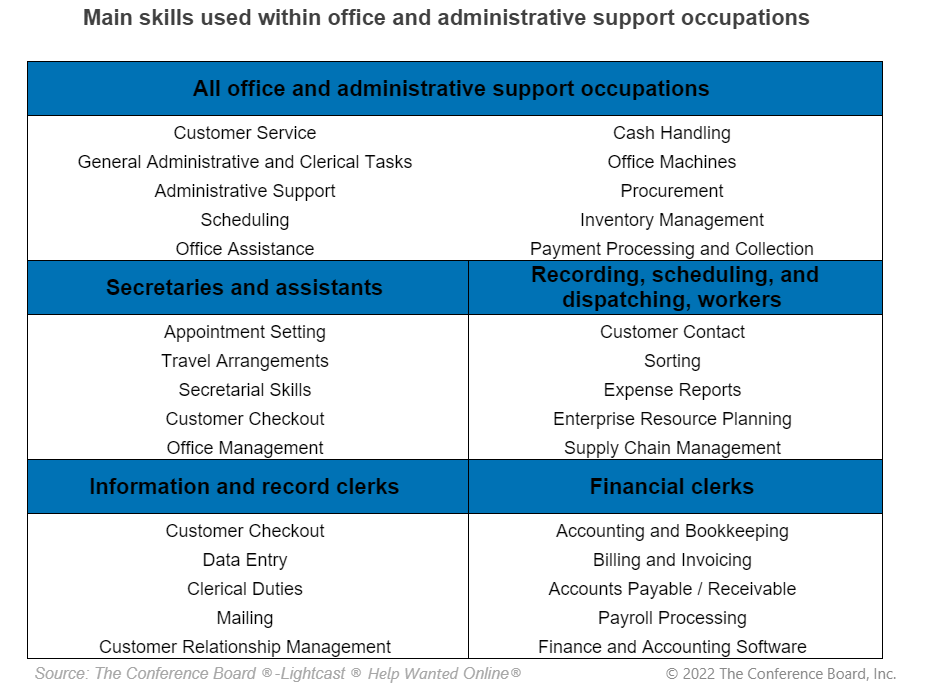Decline in office and administrative support work suggests certain tasks and skills have been replaced by automation
October 19, 2022 | Chart

Across all office and administrative support occupations, there has been a rapid decline in employment, over 2 million jobs lost between 2016 and 2021. This decline has been driven by financial clerks and secretaries which have lost respectively -10.3 and -8.7 percent of jobs between 2012-16 and 2017-21., The table below shows the tasks and skills needed in these occupations that are now disappearing.
In occupations that have fallen, their skills have been replaced by automated processes. Secretaries and assistants were historically employed for their administrative and logistical help in ‘appointment setting’, ‘travel arrangements’ and ‘office management’. However, these skills have been replaced with the rise of integrated calendar and office management systems. Financial clerks have been historically employed for their ability to record transactions in general ledgers, i.e., ‘accounting and bookkeeping’ and ‘accounts payable / receivable’ but these skills have been optimized through automated integrated sales and bookkeeping systems.
Other occupations have seen the opposite, upward trend, but this can be explained by overall surges in fast-growing industries. Fast growth in the e-commerce industry has resulted in more demand for material recording, scheduling, and dispatching workers, specifically, stock and warehouse clerks. An increase in the number of information and record clerks can be explained by growth in the professional and business services sector and the need for customer service representatives.
Based on the current and prospectively sustained labor shortage, and the productivity benefits from technological advancement and automation, more office and administrative jobs may disappear. Business leaders may look to re-evaluate the roles and tasks workers take in their organization. Eventually, a team of bookkeeping clerks could be replaced by a data analyst with the ability to automate journal entries on a much larger scale. This trend could spill over into other industries and occupations, and office and administrative support data shows the beginnings of this course.

-
Complimentary.











